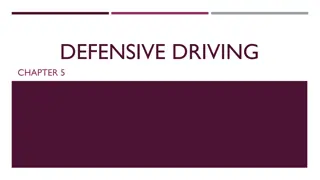Understanding Aggressive, Passive, and Assertive Behavior in 2020
Aggressive behavior is reactionary and impulsive, often leading to rule-breaking and violence. Passive behavior involves failing to express thoughts and feelings, allowing others to disregard your rights. Assertive behavior means standing up for your rights in a calm and positive manner, without being aggressive or passive. Learn the differences and examples to better navigate social interactions.
Download Presentation

Please find below an Image/Link to download the presentation.
The content on the website is provided AS IS for your information and personal use only. It may not be sold, licensed, or shared on other websites without obtaining consent from the author. Download presentation by click this link. If you encounter any issues during the download, it is possible that the publisher has removed the file from their server.
E N D
Presentation Transcript
Aggressive, Passive and Assertive Behaviour 2020 UNDERSTANDING THE DIFFERENCE BETWEEN AGGRESSIVE, PASSIVE AND ASSERTIVE BEHAVIOUR.
What is Aggressive Behaviour? Aggressive behavior is reactionary and impulsive behavior that often results in breaking household rules or the law; aggressive behavior is violent and unpredictable.
Examples of Aggressive Behaviour Resending the demands of others when others make requests passive aggressive people will mostly see this as unfair or unjust. Deliberate procrastination passive aggressive people will turn to put off doing task and this is often a conscious decision. Intentional mistakes rather than saying no passive aggressive people sometimes find it easier to deliberately perform poorly at a task. Hostile Attitude as they often assume that others know how they feel , passive aggressive people tend to immediately assume that anything they do not approve of was an intended to be a jibe at them.
What is Passive Behaviour? This involves violating your own right by failing to express honest feelings, thought and beliefs, and consequently permitting others to violate your rights. Passive or Non-assertive Behaviour can also mean expressing your thoughts and feelings in such an apologetic and self-effacing manner that others can easily disregard them. The pass responder allows other to walk all over them, like a doormat. Non-assertive people feel they have no control over events: they are controlled and immobilized.
Examples of passive aggression Avoiding/Ignoring - when you are so angry that you feel you cannot speak calmly. Procrastinating - intentionally putting off important tasks for less important ones. Obstructing - deliberately stalling or preventing an event or process of change. Fear of competition - avoiding situations where one party will be seen as better at something. Sulking - being silent, morose, sullen and resentful in order to get attention or sympathy. Chronic lateness - a way to put you in control over others and their expectations. Chronic forgetting - shows a blatant disrespect/disregard for others as punishment. Making excuses - always coming up with reasons for not doing things. Self-pity - the 'poor me' scenario. Blaming - blaming others for situations rather than being able to take responsibility for your own actions or being able to take an objective view of the situation as a whole. Learned helplessness - where a person continually acts like they can t help themselves, or is deliberately doing a poor job of something for which they are often explicitly responsible.
What is Assertive Behaviour? Being assertive means being able to stand up for your own or other people s rights in a calm and positive way, without being either aggressive, or passively accepting wrong . Assertive individuals are able to get their point across without upsetting others, or becoming upset themselves.
Examples of Assertive Behaviour Action Assertive behaviour Comfortable Direct eye contact Firm but kind expression Appropriate smiling Face/Eyes Relaxed Upright Open Calm hand gestures Respect for personal space Body language
Styles Assertive Passive Aggressive Double Click TO Play Video
What is the difference between passive aggressive and assertive behavior?
Paperwork Remember to ask for help if you need it:
Thank you! HAVE A LOVELY AFTERNOON























